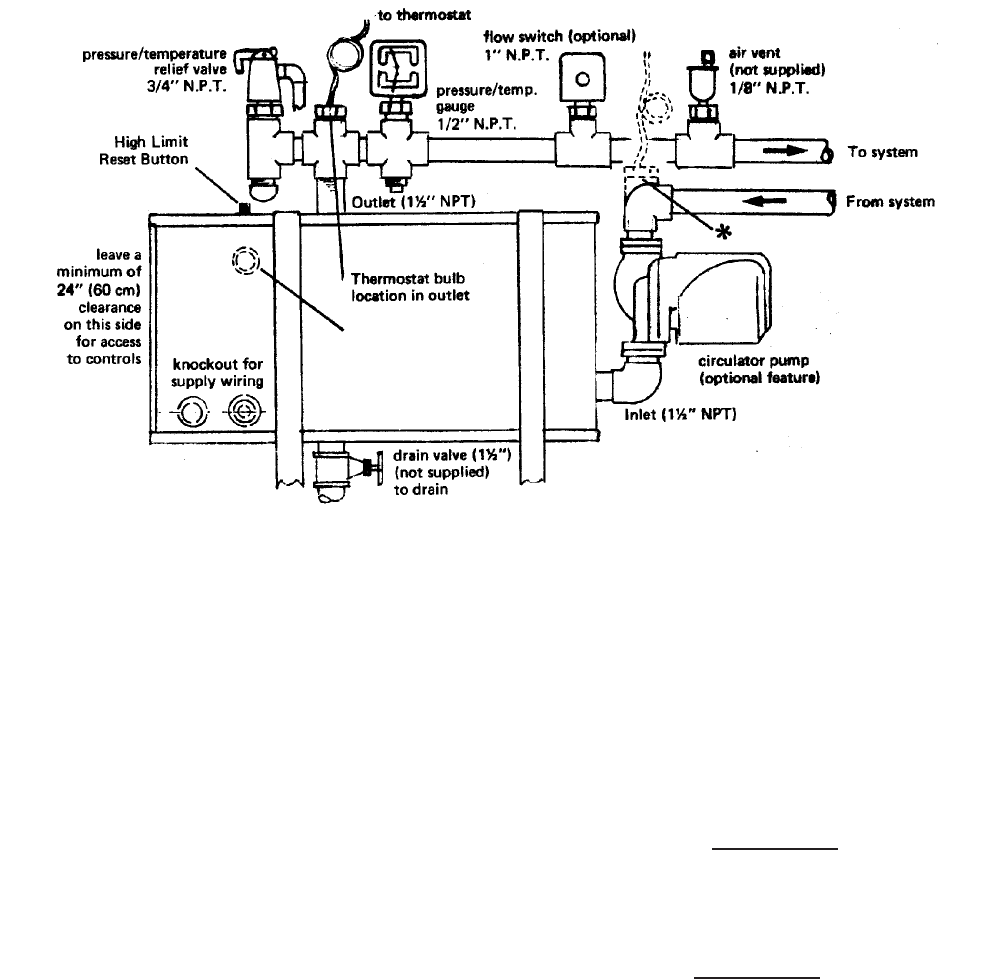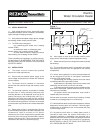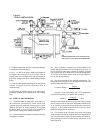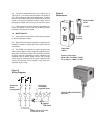
2.7.5 Optional expansion tank (for closed loop systems)
is mounted in the outlet piping.
2.7.6 A 1 1/2" NPT drain plug is fitted at the bottom of
the heater. We recommend use of a drain valve to
simplify clean-out of sludge which may accumulate in
the vessel. Sludge build-up can cause heating element
failure.
2.7.7 For flow rates greater than 50 gpm, to reduce tank
erosion, a bypass loop with regulating valve is
recommended.
2.7.8 Closed loop systems require an air bleed valve,
preferably installed at the highest point in the piping
loop.
3.0 START UP AND OPERATION
3.1 The EPW heater is designed to heat water in a
non-hazardous environment. In some closed loop
systems chemically stabilized ethylene glycol may be
added to the water for freeze protection or to elevate
the boiling point. If you are unsure as to suitability of
glycol to your heating loop contact the factory.
3.2 Check the electrical system for loose connections
and tighten if required.
3.3 After all piping is installed turn the thermostat to its
lowest setting and operate the circulating pump for up to 1/2
hour to check for leaks and to remove air pockets. In closed
loop systems use the air bleed valve to remove entrapped air.
An air lock in the heater vessel could cause the heaters to
run dry and fail prematurely.
3.4 Set the thermostat to the desired temperature. The
temperature rise through the unit will depend on the flow rate
and the heater kilowatt (kw) rating.
For water: GPM
US
=
Example: For a 30 kw heater and a 10°F temperature
rise the flow required in U.S. gallons per minute is:
GPM
US
= = 20.4
Adjust the thermostat differential to give the desired cycling
rate. It is best to use the maximum acceptable differential so
as to minimize cycling and prolong component service life.
However, if the system requires close control a narrow
differential setting will be necessary.
3.5 For systems using a by-pass loop, open the by-pass
valve to reduce the load on the pump but not enough to cause
the limit thermostat to open. For pool heating, the ideal by-
pass opening will result in water leaving the heater at not
more than 90°F.
6.83 kw
Temp. Rise (°F)
(6.83)(30)
10
Figure 2
TYPICAL INSTALLATION
Control Fuse
*N.B.
WHERE THERMOSTAT BULB IS LOCATED OTHER
THAN OUTLET, FLOW SWITCH IS RECOMMENDED.





